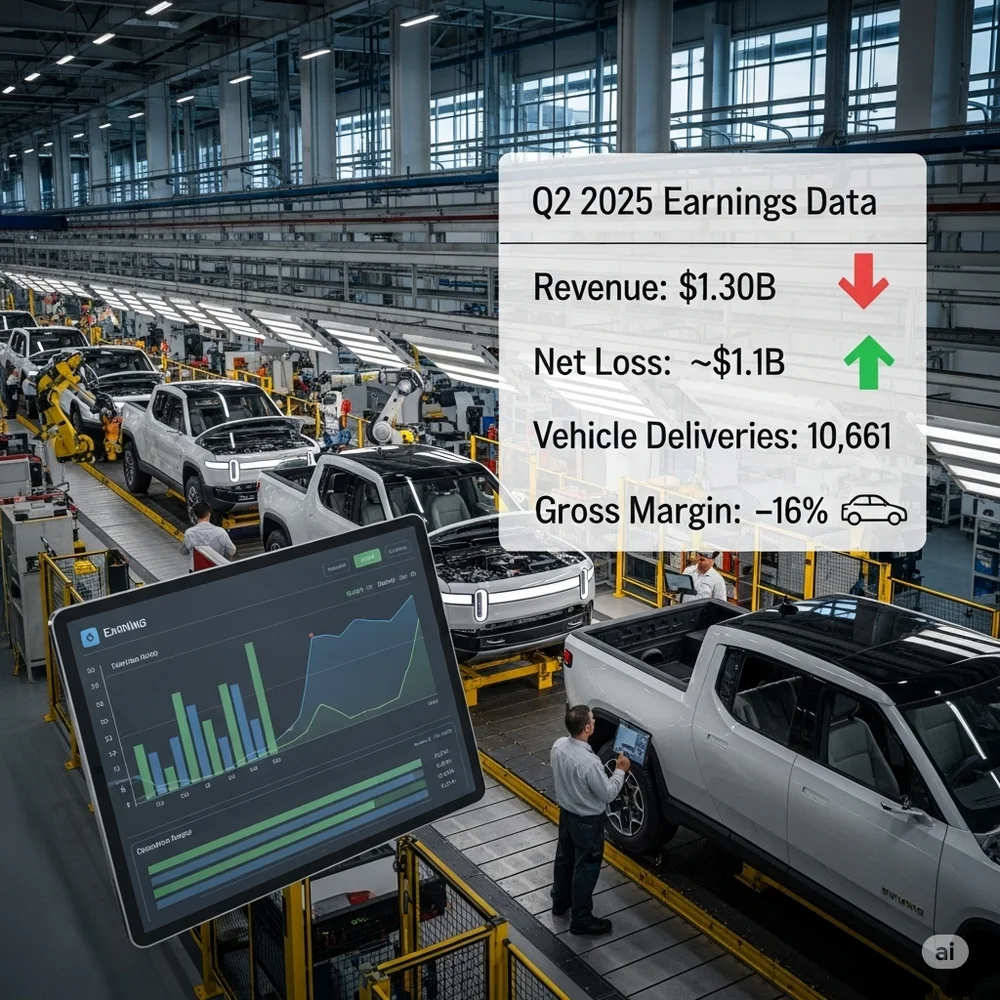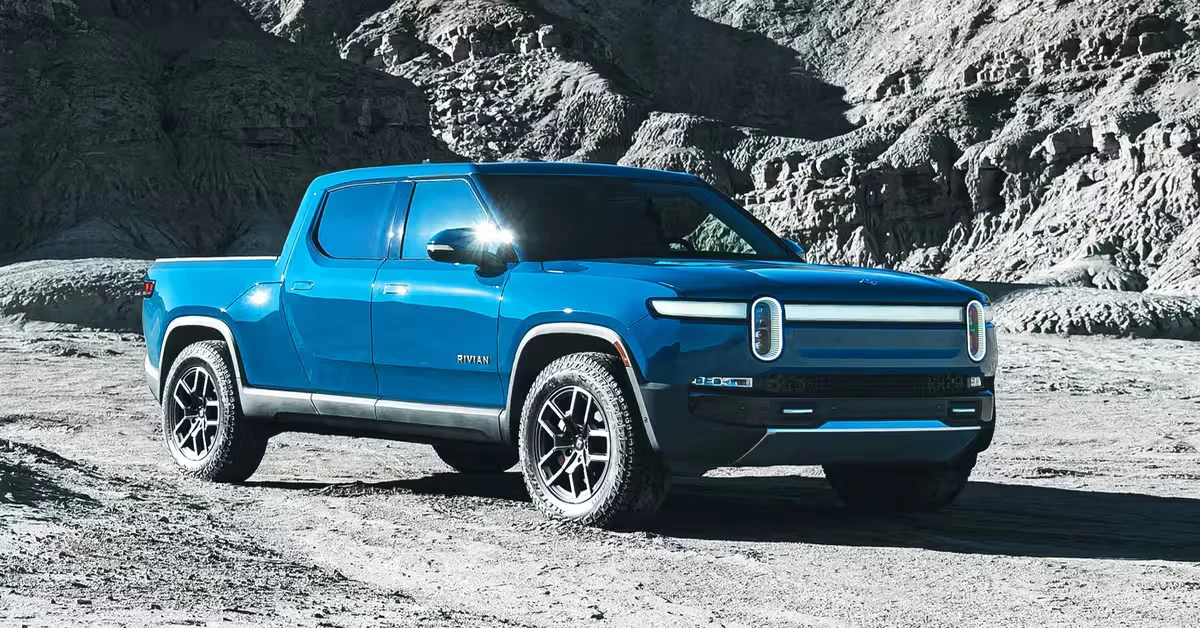Rivian surprised markets with its latest second-quarter earnings, painting a picture of mixed performance amid mounting challenges. The electric vehicle maker posted a loss of $0.97 per share, falling short of expectations and prompting a notable dip in its stock. Investors were disappointed, especially as the company also downgraded its full-year outlook.
Here’s a quick view of the numbers:
| Metric | Q2 2025 |
| Revenue | $1.30 billion (+12%) |
| Net Loss | ~$1.1 billion |
| Adjusted EBITDA Loss Forecast | $2.0B–$2.25B for 2025 |
| Gross Margin | Negative, ~–16% |
| Cash & Equivalents | ~$7.5 billion |
| Deliveries | 10,661 vehicles (–22% YoY) |
| Production | 5,979 vehicles (down 37%) |
| Cost per Vehicle | ~$118,375 (up 8%) |
| Tariff Impact | Adds several thousand dollars per unit |
Revenue for the period stood at $1.30 billion, marking a 12–13% year‑on‑year increase. Despite this growth, Rivian continues to grapple with substantial net losses, reporting around $1.1 billion, though this was an improvement over the prior year’s deeper deficit. Gross margin remained negative, hovering at about-16%, and average gross loss per vehicle was approximately $19,300.
Underlying pressures are starting to weigh heavily on its bottom line. The fading impact of zero‑emission credit sales, once a significant revenue stream, has exposed Rivian to new vulnerabilities. Policy changes such as diminishing federal EV incentives and escalating U.S. tariffs have added further financial strain.
On the brighter side, Rivian continues to demonstrate resilience through operational improvements. Production and deliveries are rising, with the company guiding for 40,000 to 46,000 vehicle deliveries in 2025, though this guidance now targets the lower end of prior expectations. With a strong cash position of approximately $7.5 billion, Rivian has some buffer to navigate these choppy waters.
There’s a silver lining: anticipation around the much-awaited R2 platform, set to launch in 2026, is palpable. This smaller, more affordable EV could open higher-volume avenues and broaden Rivian’s appeal, potentially a game-changer in the years ahead.
All told, while Rivian’s recent earnings highlight near‑term headwinds, the company’s longer-term vision remains intact. With strategic investments, technological momentum, and forthcoming models like the R2, Rivian is positioning itself to weather the storm and steer toward future growth.



